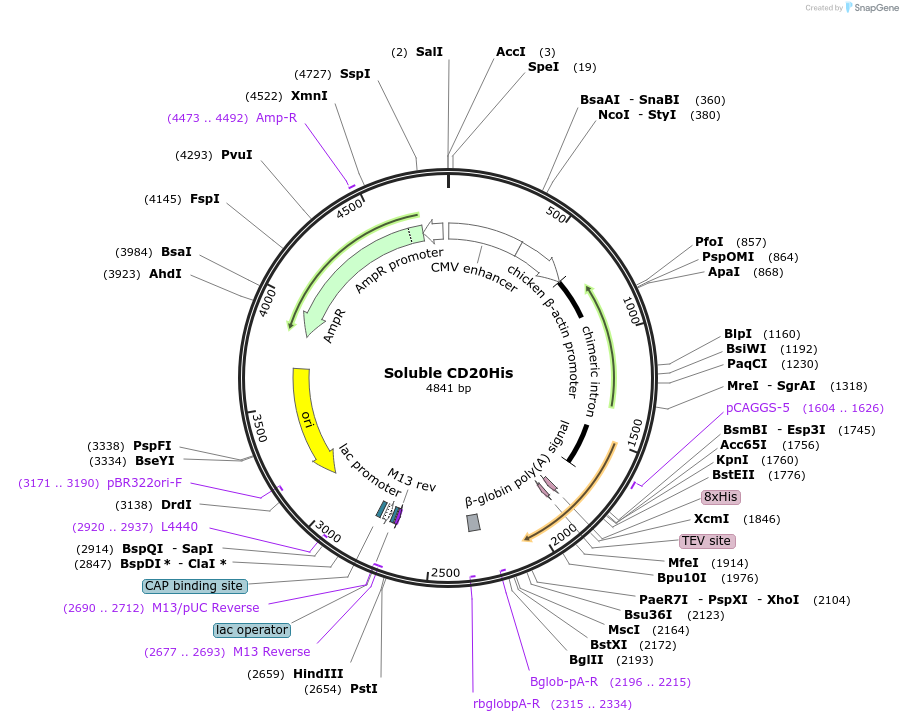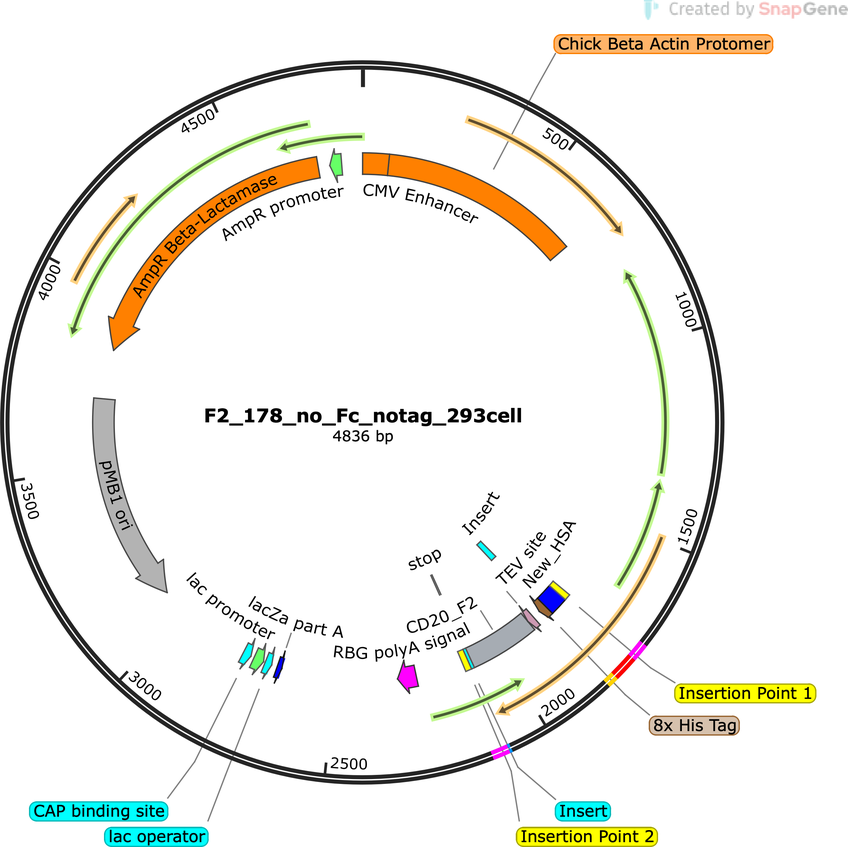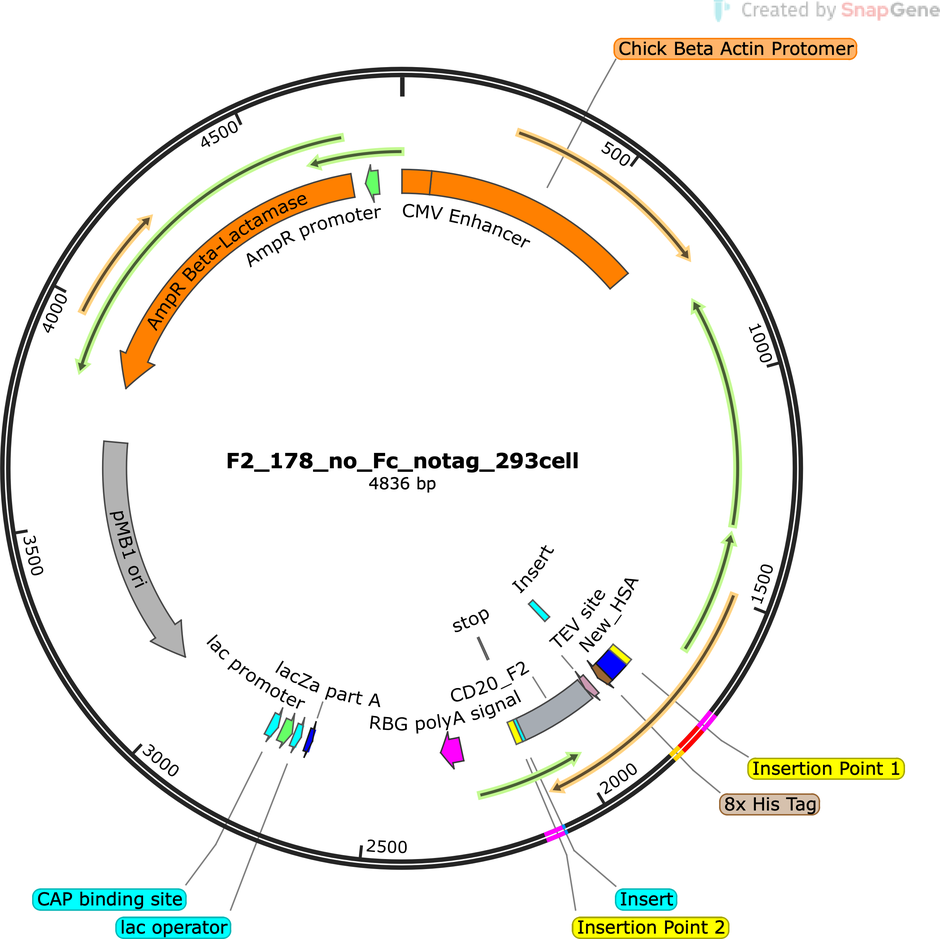Soluble CD20His
(Plasmid
#246596)
-
PurposeComputationally designed water-soluble mimic of the transmembrane protein CD20 dimer. For expression as secreted protein in Expi293 cell. Insert: HSA-his8-TEVsolubleCD20- (10.4kDa)
-
Depositing Lab
-
Sequence Information
Ordering
| Item | Catalog # | Description | Quantity | Price (USD) | |
|---|---|---|---|---|---|
| Plasmid | 246596 | Standard format: Plasmid sent in bacteria as agar stab | 1 | $89 | |
Backbone
-
Vector backbonepAH
-
Vector typeMammalian Expression
Growth in Bacteria
-
Bacterial Resistance(s)Ampicillin, 100 μg/mL
-
Growth Temperature37°C
-
Growth Strain(s)DH5alpha
-
Copy numberHigh Copy
Gene/Insert
-
Gene/Insert nameSoluble CD20
-
SpeciesH. sapiens (human), Synthetic
- Promoter CAG
-
Tag
/ Fusion Protein
- HSA-8xHis-TEV (N terminal on insert)
Cloning Information
- Cloning method Unknown
- 5′ sequencing primer n/a
- (Common Sequencing Primers)
Resource Information
-
Supplemental Documents
Terms and Licenses
-
Academic/Nonprofit Terms
-
Industry Terms
- Not Available to Industry
Trademarks:
- Zeocin® is an InvivoGen trademark.
These plasmids were created by your colleagues. Please acknowledge the Principal Investigator, cite the article in which the plasmids were described, and include Addgene in the Materials and Methods of your future publications.
-
For your Materials & Methods section:
Soluble CD20His was a gift from Brian Kuhlman (Addgene plasmid # 246596 ; http://n2t.net/addgene:246596 ; RRID:Addgene_246596) -
For your References section:
Design of a water-soluble CD20 antigen with computational epitope scaffolding. Yao Z, Kuhlman B. Protein Sci. 2025 Aug;34(8):e70184. doi: 10.1002/pro.70184. 10.1002/pro.70184 PubMed 40671354







